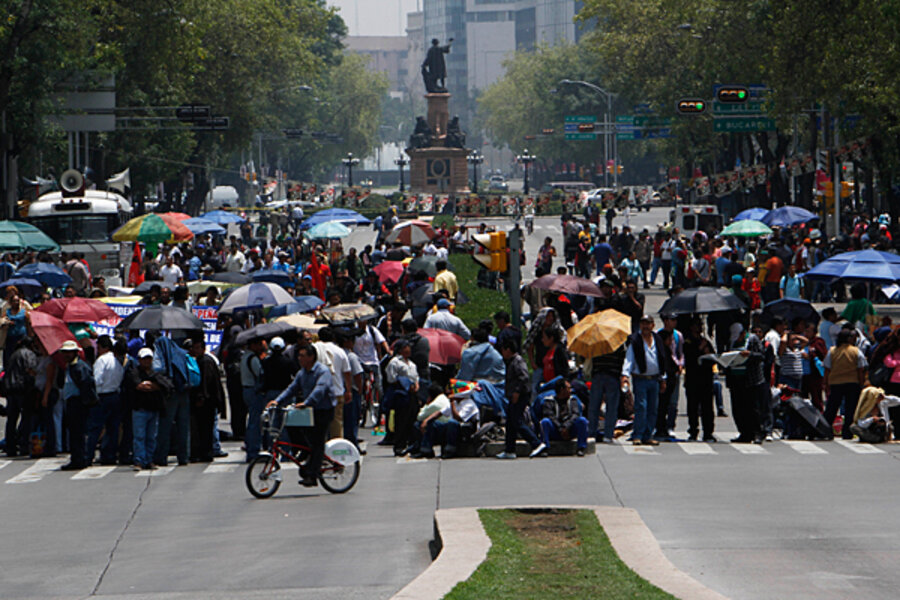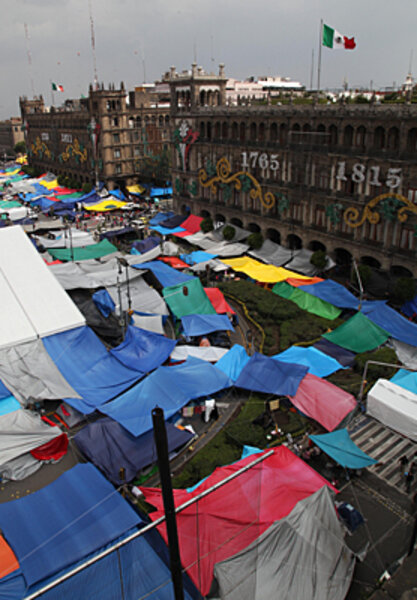Striking teachers make their presence felt in Mexico City
Loading...
| Mexico City
Mexico City's government offices, housed in a colonial palace, look onto the sprawling Zocalo plaza – one of the world’s largest public squares. But this week the plaza has all but disappeared under a tent city constructed by a striking teachers' union.
They are protesting a federal education reform that hinges their job security on their performance in evaluations. Thousands have taken over the Zocalo and nearby streets. Elsewhere in the city, teachers blocked first the lower house of congress and then the senate, forcing deputies and senators to meet in a convention center to continue their August special session, according to the El Universal newspaper (link in Spanish). The city estimates there are 19,000 protesters in all.
The teachers – mostly from Mexico’s southern states, and who belong to a wing of the powerful union – are angering city residents with their tactics, which include marches that have worsened already stultifying traffic jams.
On Friday afternoon, another large block of protesting educators swarmed a key access road to the international airport.
Under heavy criticism, Mayor Miguel Angel Mancera called for calm in a Thursday press conference.
“We must avoid confrontation,” he said. “We must avoid violent encounters. At all cost we must avoid that this could escalate to other scenarios."
In a television interview Thursday, Senate President Ernesto Cordero said, “Those who should be governing and maintaining the public order are not doing it.”
A patchwork quilt of colorful plastic tarps, strung up every which way across the Zocalo, provides little shelter from the city’s heavy summer rains. Beneath, the teachers gather in groups, snooze on sleeping bags, or otherwise try to pass the time amid the endless rows of tents.
How long will the protest last?
“We don’t know,” says Erendira Mendoza, a preschool teacher from the indigenous Mixteca region of Oaxaca who arrived Tuesday. “We’ll stay until we secure a solution that’s favorable to us.”
Ms. Mendoza says one of the teachers’ primary complaints is that the education reform “doesn’t take into account the context” of their rural indigenous communities. The congress is currently working to pass the secondary laws that will make the reform effective.
Meanwhile, students across Oaxaca and states including Guerrero and Tabasco went without classes during what should have been their first week of school. Mexico’s corrupt education system underperforms across many metrics, and the southern states fall even further behind.
Eduardo Gonzalez, a lawyer, tried to weave his way through the tent city to take care of business at the city government. He was not a fan of the teachers' actions.
“They’re obstructing,” he said. “It makes me angry. Why does the government allow them to do this?”







